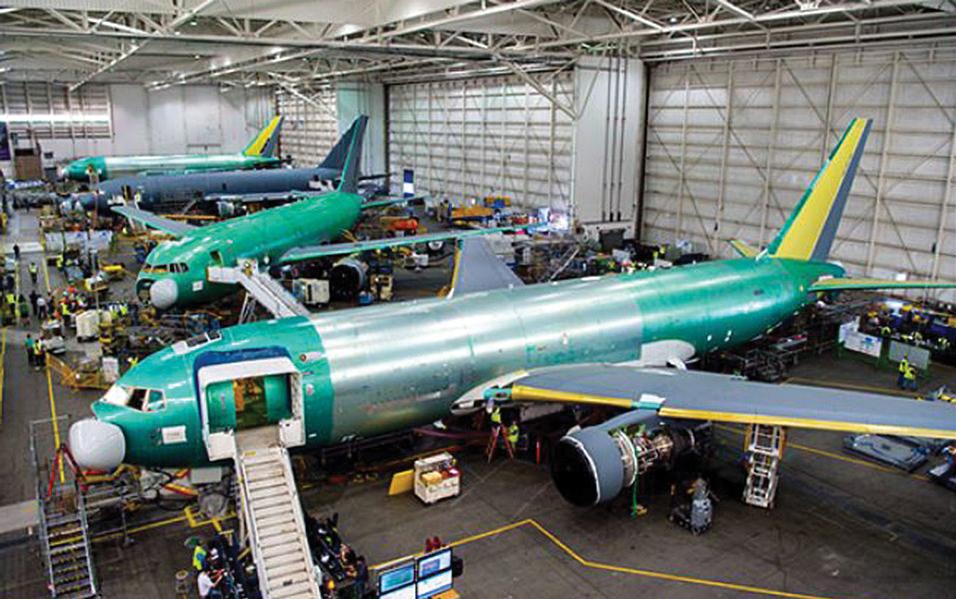
A chronic shortage of parts and labor drove Boeing executives on Oct. 26 to report $2.76 billion in new reach-forward losses in the third quarter across five fixed-price development programs in the Defense, Space and Security (BDS) division.
The fresh charge and break-even performance by mature production programs resulted in BDS posting a $2.8 billion quarterly loss from operations. Quarterly revenues declined by 20% compared to the same period a year ago, totaling $5.31 billion.
Reach-forward losses have become a familiar pattern among the five fixed-price development programs that Boeing has acquired since 2011, which are the KC-46, VC-25B, MQ-25, T-7A and Commercial Crew programs. Since reporting an initial loss on the KC-46 program in 2014, the five programs have now combined to accumulate nearly $11.5 billion in reach-forward losses over an 8-year period for a division that currently reports about $26.5 billion annually in sales.
The scale of the new reach-forward losses within Boeing staggered some market analysts. But Boeing executives offered no apologies for charges that they blamed on macroeconomic forces rather than internal performance.
“We’re not embarrassed by [the $2.76 billion reach-forward losses],” says Boeing CEO David Calhoun. “They are what they are.”
The KC-46 program continued to lead all of the five fixed-price programs in the scale of the reach-forward losses. The 767-derived U.S. Air Force tanker accounted for $1.17 billion of the $2.76 billion of the third-quarter accounting charges. Since 2014, Boeing has now reported a total of $6.58 billion in reach-forward losses on the KC-46 alone.
In this case, Calhoun says the charges were driven by macroeconomic forces beyond Boeing’s control, especially a crippling shortage of parts flowing from suppliers to the KC-46 assembly line in Everett, Washington. The parts shortage is aggravated by a lack of trained workers amidst a wider, unstable labor market, he adds.
Most programs expect to see costs decline as efficiency improves along a reliable learning curve. But the labor market instability and chronic supply chain disruptions have forced Boeing to change its expectations, Calhoun says. A recent review of the five fixed-price programs prompted Boeing to lower its expectations for improved performance.
“We don’t have any baked-in learning curves anymore,” Calhoun says. “These supply constraints we face today will not end until we finish [the programs].”
That change in philosophy created a ripple effect throughout Boeing’s portfolio of fixed-priced programs. In addition to the $1.17 billion charge for the KC-46, the company also reported reach-forward losses of $766 million on the VC-25B, $351 million on the MQ-25, $285 million on the T-7 and $195 million on the Commercial Crew program.
The T-7 program has sustained losses on development and production. Including a $185 million charge in the third quarter, Boeing has reported $936 million in reach-forward losses for the new Air Force trainer since 2018. The Air Force plans to order 346 T-7 jets, so Boeing expects to lose an average of $2.7 million per aircraft over the life of the program.
The finances for each of the fixed-priced programs could still worsen, Calhoun says. Boeing expects the macroeconomic conditions that caused the latest charges to persist at least through 2023.
“The best fact set I can give is that we’re getting closer to the end of these programs,” Calhoun says.





